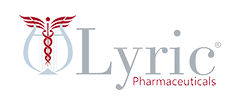预约演示
更新于:2025-08-27

Lyric Pharmaceuticals, Inc.
更新于:2025-08-27
概览
关联
2
项与 Lyric Pharmaceuticals, Inc. 相关的临床试验NCT02784392
A Phase 2, Multicenter, Randomized, Double-Blind, Comparator-Controlled Study of the Efficacy, Safety, and Pharmacokinetics of Intravenous Ulimorelin (LP101) in Patients With Enteral Feeding Intolerance (EFI)
The purpose of this study is to evaluate the effect Ulimorelin in patients with enteral feeding intolerance.
开始日期2016-10-01 |
申办/合作机构 |
NCT02993055
A Phase I, Randomised, Double-Blind, Placebo-Controlled, Dose-Escalation Study to Assess the Safety, Tolerability, Pharmacokinetics and Pharmacodynamics of Ulimorelin (LP101)
A Phase I dose escalation study involving healthy subjects.
开始日期2015-01-01 |
申办/合作机构 |
100 项与 Lyric Pharmaceuticals, Inc. 相关的临床结果
登录后查看更多信息
0 项与 Lyric Pharmaceuticals, Inc. 相关的专利(医药)
登录后查看更多信息
1
项与 Lyric Pharmaceuticals, Inc. 相关的文献(医药)2017-10-03·Xenobiotica; the fate of foreign compounds in biological systems4区 · 医学
An open-label, single-dose, phase 1 study of the absorption, metabolism and excretion of quizartinib, a highly selective and potent FLT3 tyrosine kinase inhibitor, in healthy male subjects, for the treatment of acute myeloid leukemia
4区 · 医学
Article
作者: Sanga, Madhu ; Gammon, Guy ; James, Joyce ; Marini, Joseph ; Hale, Christine ; Li, Jianke
1. Quizartinib absorption, metabolism and excretion were characterized in six healthy men receiving a single oral dose of 60 mg (≈100 μCi) of [14C]-quizartinib. Blood, plasma, urine and faeces were collected ≤336 h postdose. 2. Four hours postdose, maximum mean ± SD blood radioactivity concentrations were 296 ± 67.4 ng equivalents/g. A mean ± SD of 1.64 ± 0.482% and 76.3 ± 6.23% of the dose was recovered in urine and faeces, respectively, within 336 h postdose. 3. Radio-detector high-performance liquid chromatography (radio-HPLC) and liquid chromatography-mass spectrometry (LC-MS) showed two main radioactive peaks in plasma, unchanged quizartinib and mono-oxidative metabolite, AC886. Five additional metabolites in plasma were identified by LC-MS, but low levels prevented radio-HPLC detection. Although unchanged quizartinib was the main radioactive component in faeces (mean, 4.0% of administered dose), 15 metabolites representing a mean of 1.0-3.5% of administered dose were found. Quizartinib was predominantly metabolized by phase I biotransformations (oxidation, reduction, dealkylation, deamination, hydrolysis and combinations thereof). 4. This study indicated that quizartinib was rapidly and orally bioavailable, extensively metabolized, with AC886 as the major circulating metabolite, and predominantly eliminated in faeces. Quizartinib was well tolerated in the subjects.
1
项与 Lyric Pharmaceuticals, Inc. 相关的新闻(医药)2023-07-20
The firm's other investments in the healthcare IT space include Lyric (formerly known as ClaimsXten), WellSky and IQVIA.
Asset management firm TPG is buying healthcare IT company Nextech from Thomas H. Lee Partners for $1.4 billion, the company announced Wednesday.
Tampa, Florida-based Nextech provides electronic medical record and practice management software to specialty physician practices. The company services more than 11,000 physicians and over 60,000 office staff members in the clinical specialties of dermatology, ophthalmology, orthopedics, plastic surgery, and medical spa practices, according to a press release.
TPG is investing in Nextech through TPG Capital, its U.S. and European late-stage private equity platform.
TPG has $137 billion of assets under management.
The deal will increase TPG Capital's presence in the healthcare services market and the investment builds on TPG's "thematic focus on healthcare IT solutions that enhance provider productivity and enable high-quality patient care across settings,” TPG partners Katherine Wood and Art Heidrich said in a statement.
The firm's other investments in the healthcare IT space include Lyric (formerly known as ClaimsXten), WellSky and IQVIA.
“Nextech’s goal is to simplify the healthcare experience so physicians can focus on what matters most: their patients,” said Bill Lucchini, CEO of Nextech in a statement. “In TPG, we have found a partner who supports our mission to simplify the process of delivering excellent care and who brings to our organization distinct experience building businesses in the healthcare and software sectors. We’re excited to work together to grow our capabilities and strengthen our position as the end-to-end technology platform for specialty care providers.”
The deal is expected to close in the third quarter of 2023.
“Nextech’s SaaS and payment solutions are purpose-built for specialty providers and create meaningful workflow and efficiency benefits for its customers. We look forward to partnering with Bill and the Nextech team to expand the reach and impact of the platform," Wood and Heidrich said.
The healthcare IT company developed practice management and electronic medical record workflow and integrated patient engagement and revenue cycle management software to help streamline back-end processes and enhance optimization for providers and practices.
Thomas H. Lee Partners bought Nextech in 2019 for a reported $500 million from Francisco Partners, PEHub reported.
William Blair served as lead financial advisor to Nextech and THL, and Raymond James and Jamieson served as financial advisors. Kirkland & Ellis served as legal counsel to Nextech and THL.
TripleTree, LLC, Guggenheim Securities, LLC, and UBS Investment Bank served as financial advisors to TPG, and Ropes & Gray LLP served as legal counsel.
并购
100 项与 Lyric Pharmaceuticals, Inc. 相关的药物交易
登录后查看更多信息
100 项与 Lyric Pharmaceuticals, Inc. 相关的转化医学
登录后查看更多信息
组织架构
使用我们的机构树数据加速您的研究。
登录
或

管线布局
2025年11月09日管线快照
无数据报导
登录后保持更新
药物交易
使用我们的药物交易数据加速您的研究。
登录
或

转化医学
使用我们的转化医学数据加速您的研究。
登录
或

营收
使用 Synapse 探索超过 36 万个组织的财务状况。
登录
或

科研基金(NIH)
访问超过 200 万项资助和基金信息,以提升您的研究之旅。
登录
或

投资
深入了解从初创企业到成熟企业的最新公司投资动态。
登录
或

融资
发掘融资趋势以验证和推进您的投资机会。
登录
或

生物医药百科问答
全新生物医药AI Agent 覆盖科研全链路,让突破性发现快人一步
立即开始免费试用!
智慧芽新药情报库是智慧芽专为生命科学人士构建的基于AI的创新药情报平台,助您全方位提升您的研发与决策效率。
立即开始数据试用!
智慧芽新药库数据也通过智慧芽数据服务平台,以API或者数据包形式对外开放,助您更加充分利用智慧芽新药情报信息。
生物序列数据库
生物药研发创新
免费使用
化学结构数据库
小分子化药研发创新
免费使用